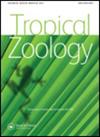草甘膦和百草灭对非洲鲶鱼(Clarias gariepinus, Teugels 1986)的急性毒性研究
IF 0.4
4区 生物学
Q4 ZOOLOGY
引用次数: 19
摘要
通过对鱼的死亡率和生化指标的变化,评价了急性暴露于常用除草剂、草甘膦和百草枯后的影响。非洲鲶鱼的幼鱼暴露于不同浓度的草甘膦和百草枯。暴露96 h后,百草枯的96 h LC50为0.07 mg/l,草甘膦的96 h LC50为0.530 mg/l。暴露期后,采用常规方法和市售试剂盒对鱼肝脏中的酶进行检测。方差分析显示,与对照组相比,试验组谷丙转氨酶(ALT)、天冬氨酸转氨酶(AST)、乳酸脱氢酶(LDH)和碱性磷酸酶(ALP)活性均显著(p < 0.05)升高。硫代巴比妥酸物质(TBARS)测定的抗氧化酶过氧化氢酶(CAT)、超氧化物歧化酶(SOD)、谷胱甘肽过氧化物酶(GPx)活性和脂质过氧化活性均显著(p < 0.05)升高。结果表明,草甘膦和百草枯具有调节某些鱼类生化参数的能力,因此可以作为环境影响评价方案中毒性的可靠指标。本文章由计算机程序翻译,如有差异,请以英文原文为准。
Acute toxicity of glyphosate and paraquat to the African catfish (Clarias gariepinus, Teugels 1986) using some biochemical indicators
The impact of acute exposure of Clarias gariepinus juveniles to commonly used herbicides, glyphosate and paraquat was evaluated through changes in fish mortality and biochemical indeces. Juveniles of the African catfish were exposed to varying acute concentration of glyphosate and paraquat. After 96 h of exposure, the 96 h LC50 for paraquat was found to be 0.07 mg/l while that of glyphosate was found to be 0.530 mg/l. After the exposure period, some enzymes were assayed for in fish liver using a combination of conventional methods and commercially available kits. Comparing with the control, ANOVA analysis revealed that there were significant (p < 0.05) increases in the activities of all enzymes assayed for alanine aminotransferase (ALT), aspartate aminotransferase (AST), lactate dehydrogenase (LDH) and alkaline phosphatase (ALP). There were also significant (p < 0.05) increases in the activities of the antioxidant enzymes: catalase (CAT), superoxide dismutase (SOD), glutathione peroxidase (GPx) and in lipid peroxidation, which was measured by thiobarbituric acid substances (TBARS). The result revealed that glyphosate and paraquat have the ability to modulate certain fish biochemical parameters and can therefore serve as reliable indicators of toxicity in environmental impact assessment programmes.
求助全文
通过发布文献求助,成功后即可免费获取论文全文。
去求助
来源期刊

Tropical Zoology
生物-动物学
CiteScore
2.50
自引率
0.00%
发文量
1
审稿时长
>12 weeks
期刊介绍:
Tropical Zoology is an international zoological journal publishing original papers in the field of systematics, biogeography, phylogeny, ecology and conservation of all terrestrial and aquatic animal Phyla from tropical and subtropical areas.
Only papers with new information, high quality and broad interest are considered. Single species description and checklists are not normally accepted. Review papers are welcome. The journal is owned by the Istituto di Ricerca sugli Ecosistemi Terrestri of the Consiglio Nazionale delle Ricerche, Florence, Italy (CNR-IRET) who performs research into the structure and functioning of aquatic and terrestrial ecosystems, focusing in particular on anthropogenic pressure and global change. The knowledge amassed forms the scientific basis for identifying the most appropriate protective and corrective interventions, and provides support for the bodies entrusted with formulating policies for environmental protection and recovery.
 求助内容:
求助内容: 应助结果提醒方式:
应助结果提醒方式:


